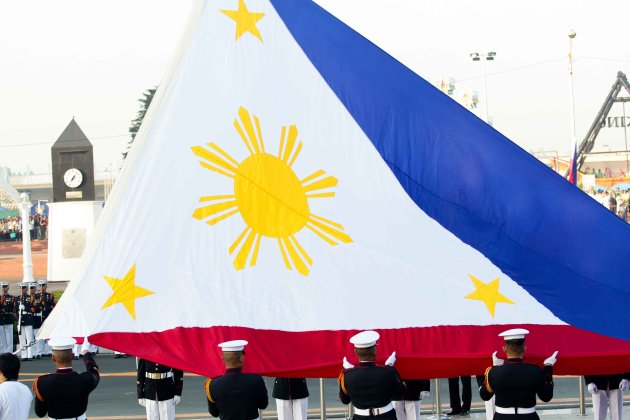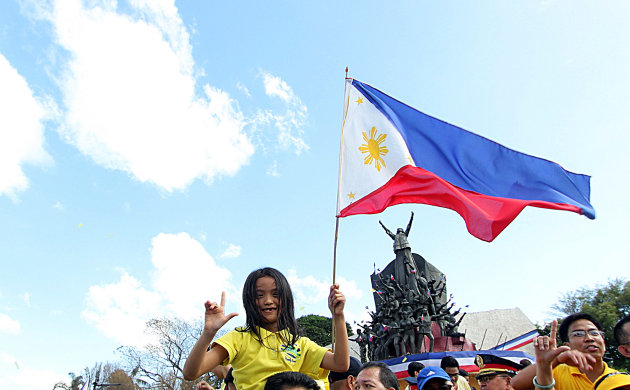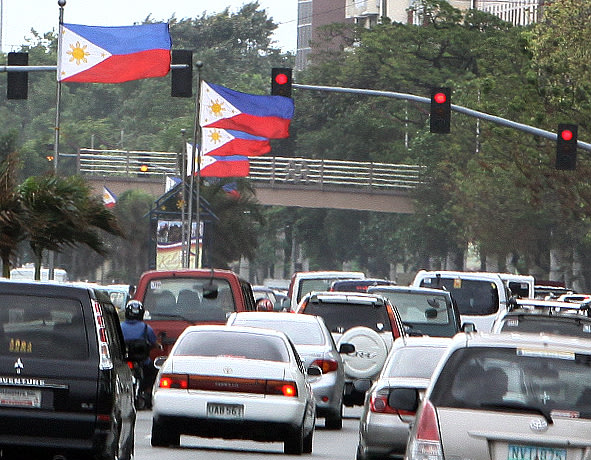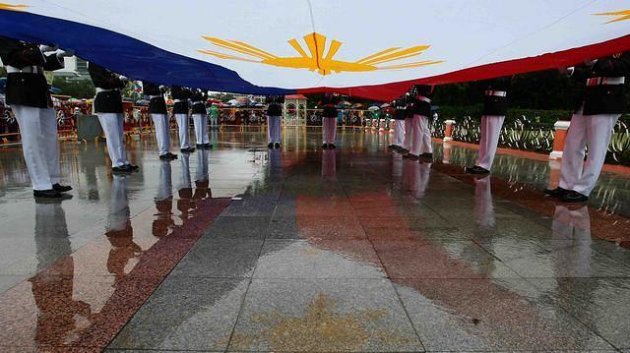
The Philippines’ on Wednesday again celebrates its freedom from foreign rule.
Filipinos mark Independence Day to commemorate General Emilio Aguinaldo’s declaration of independence from Spain in June 12, 1898.
But did you know that this has not always been the case?
Military officers raise the Philippine flag during the opening ceremony of Jose Rizal's 116th death anniversary …
1. It was only in 1964 that Philippines began celebrating Independence Day on June 12. Filipinos used to mark Independence Day on July 4, the day the U.S. granted Philippine independence, which is now called the Filipino-American Friendship Day.
2. Aguinaldo’s declaration of Philippine independence was not recognized by both Spain and the U.S. since the Spaniards sold the archipelago to the Americans in the Treaty of Paris on Dec. 10, 1898.
 Flags are seen waving in front of the Department of Affairs in Pasay City, south of Manila, on 2 May 2013, as the …
Flags are seen waving in front of the Department of Affairs in Pasay City, south of Manila, on 2 May 2013, as the …4. The original copy of the Proclamation of Philippine Independence is being kept in the National Library. It was among the many revolutionary papers stolen from the Library. The 21-page document was returned only in 1994 by University of the Philippines professor Milagros Guerrero, who acted as a mediator to retrieve the stolen papers.
 A child raises a Philippine flag and flashes the Laban (fight) sign, during the 27th anniversary of EDSA 1 People …
A child raises a Philippine flag and flashes the Laban (fight) sign, during the 27th anniversary of EDSA 1 People …6. Since June 12 was designated as Independence Day, the celebration of Flag Day instead commemorated the Battle of Alapan on May, 28, 1898, when the Philippine flag was first unfurled in the battlefield.
 Juani Guirado waves the Philippine flag. (Czeasar Dancel/NPPA Images)
Juani Guirado waves the Philippine flag. (Czeasar Dancel/NPPA Images)8. The Philippine flag’s design is inspired by the flag of the United States and countries which also fought Spanish rule, including Cuba, Puerto Rico, Argentina, Peru and Uruguay. Symbolisms used in flags used by the revolutionary movement “Katipunan” also prominently figure in the national colors.
 Flags are raised and displayed proudly at streets and buildings as the nation commemorates National Flag Day.
Flags are raised and displayed proudly at streets and buildings as the nation commemorates National Flag Day.10. Although now taken to signify the three island groups in the Philippines—Luzon, Visayas and Mindanao—the thee stars in the Philippine flag originally represented Luzon, Panay and Mindanao.
“[T]he tree stars, signifying the three principal Islands of these Archipelago – Luzon, Mindanao, and Panay where the revolutionary movement started…” the Declaration of Independence read.

12. The lyrics of the national anthem now known as “Lupang Hinirang” have been adapted from a Spanish poem entitled “Filipinas,” written by Jose Palma and originally published in La Independencia in 1899.
article from http://ph.news.yahoo.com/12-things-you-may-not-know-about-june-12-114728886.html

0 comments:
Post a Comment